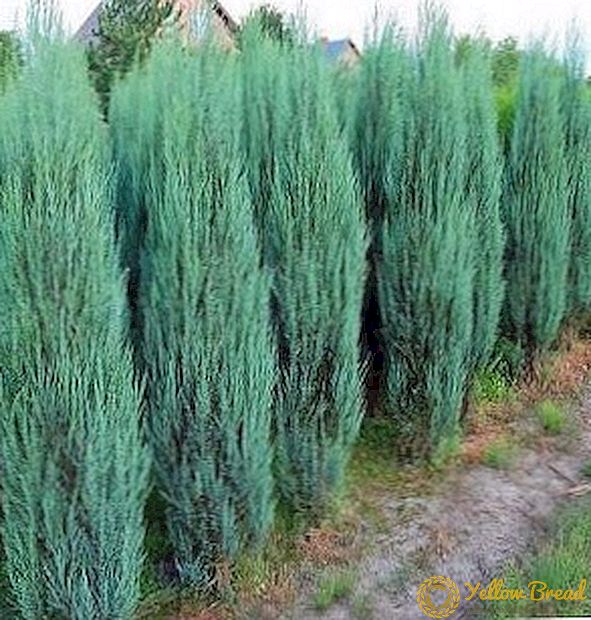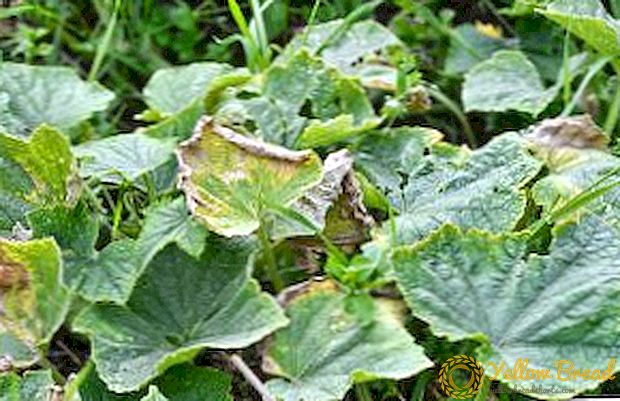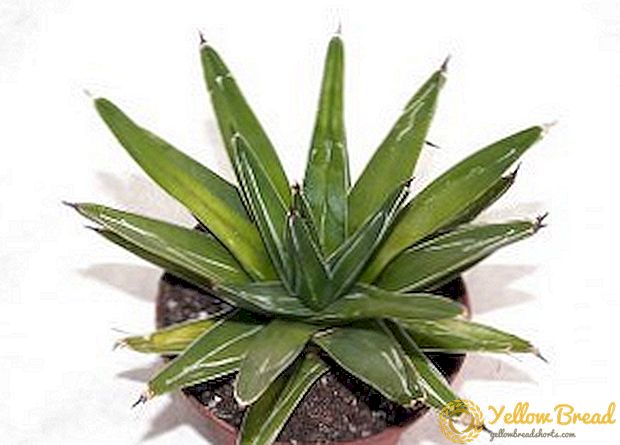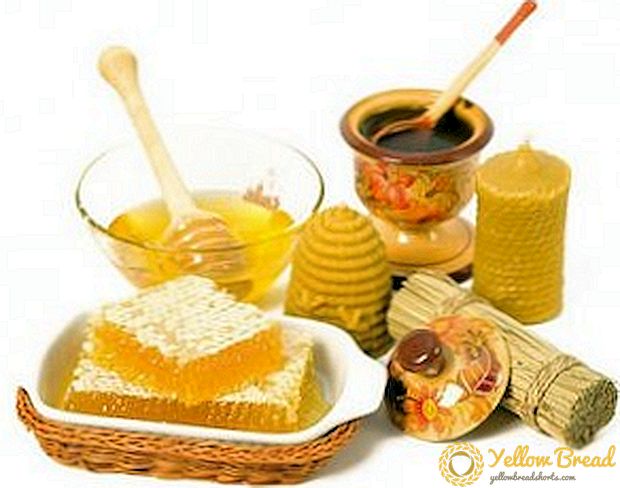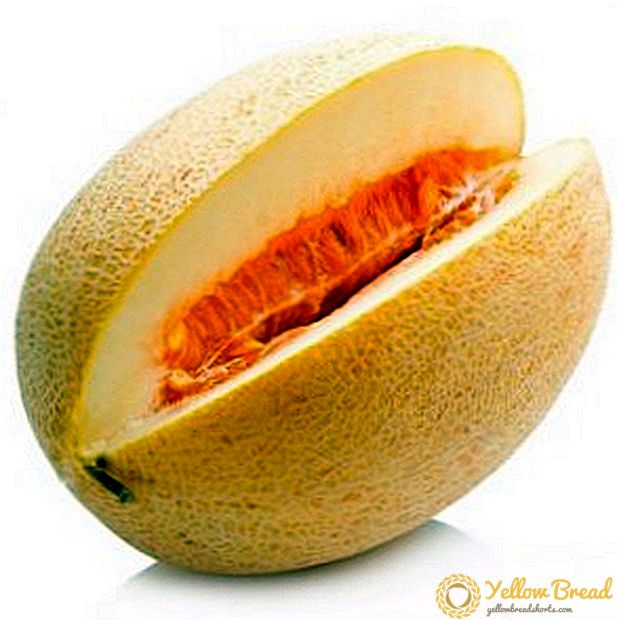 Many gardeners grow strawberries on their plots, the red berries of which are loved by adults and children, but strawberries, strawberry "forest sister" are not frequent guests of the gardens. Today we will discuss various varieties of remontant strawberries and their cultivation from seeds at home. We learn how to germinate seed and get a strong healthy seedlings for picking in open ground.
Many gardeners grow strawberries on their plots, the red berries of which are loved by adults and children, but strawberries, strawberry "forest sister" are not frequent guests of the gardens. Today we will discuss various varieties of remontant strawberries and their cultivation from seeds at home. We learn how to germinate seed and get a strong healthy seedlings for picking in open ground.
- Requirements for planting material
- Soil and growing container
- Planting dates
- Seed preparation
- Sowing seeds for seedlings
- Care of crops
- Seedling care
- Dive seedlings
- Hardening
- Planting seedlings in open ground
Requirements for planting material
We will start with the choice of the optimal planting material, from which we will get remontant strawberries, fruiting the whole season. It is necessary to choose only from small-fruited varieties, as they are more unpretentious and bear fruit better in open ground.

These include the following:
- Alexandrina;
- Ali Baba;
- White soul;
- Alpine novelty;
- Yellow miracle.
It is worth remembering that if in the future you want to collect seeds from already planted strawberries, then acquire exactly varieties, not hybrids, since maternal qualities are not transferred to hybrids (as is the case with the reproduction of many flowers and fruit trees in a generative way).
Soil and growing container
Repairing strawberries when grown from seeds requires a certain substrate and an appropriate capacity in which a peculiar microclimate can be maintained.
As a soil, any light soil of medium fertility can be used together with sand and humus (3: 1: 1 ratio). Some soaked peat tablets can be placed in the substrate to help seedlings at an early stage. It is strictly forbidden to use any heavy clay soils, as moisture stagnates in them, which favorably affects the development of the fungus.
Speaking of protection from the fungus, we smoothly proceed to the choice of capacity. The best option would be any shallow transparent container with lid. This capacity is best suited as any light prevents the development of the fungus. It is not worth spending a lot of time searching for the perfect container, since ordinary sudochek from the supermarket is suitable for planting.
Before planting, decontaminate the container with alcohol or potassium permanganate, make several holes in the bottom to release excess moisture.

Planting dates
Now let's talk about when to plant strawberry seeds on seedlings. There are several temporary options that depend on your desire to get tasty products as early as possible, the regional location and the expected effort to grow strawberries.
The first option involves early sowing in early Februaryso that in the same year you can enjoy delicious berries from young bushes. However, it should be understood that such sowing obliges you to carry out additional activities related to providing extended daylight and heating, and the germination of seeds will be slightly worse than in the second version.
The second option is spring planting. Sowing is carried out in late March-early April. In this case, in the first year you will not receive finished products, but the financial costs and time spent on caring for seedlings will be significantly reduced, as will the percentage of seeds not germinated.
Seed preparation
Before you carry out planting strawberry seeds for seedlings, you need to do their preparation to improve germination. The main process that will remove the seeds from hibernation is stratification (the influence of moisture and negative temperature on the protective layer of seeds).

Stratification is needed in order to naturally destroy the solid protective sheath of seed, which protects the core from moisture. That is, without stratification, seeds can lie in the ground for more than one year, until the shell collapses. For this reason, to do without additional training will not work.
There are 2 variants of stratification, which equally well remove the seed from the "hibernation". Stratification with the help of snow (natural version).Immediately it should be said that if you live in the southern regions, where snow falls every few years, then there is no need to look for it, since the methods of stratification are not very different in terms of subsequent germination of seeds.
This option implies such sequencing:
- We take a transparent container and fill it with an earthen mixture, leaving about 2-3 cm to the edge.
- Pour snow over the soil and lightly tamp to create a more or less flat surface.
- We put all the seed on the snow, leaving equal intervals. No need to press or bury seeds in the snow.
- We put the container in the refrigerator (not in the freezer!) For three days.

"Technical" stratification using condensate. In this case, we will manage without the use of snow, since it is not always possible to find it, especially when sowing in late March and early April.
We carry out such sequencing:
- Fill the container with soil, leaving about 2 cm to the edge.
- We spread the seeds on the surface of the soil at an equal distance from each other and press a little into the soil. You can also mix the seeds with sand and just scatter on the surface, but in this case it will be more difficult to control the density of crops.
- We cover the container with a lid or several layers of food film and place it for three days in the refrigerator.
There is a third method that does not apply to stratification. Seed material can be soaked in thawed snow water for two days. To do this, put the seeds in cotton wool, put in a small pot and pour cold water with snow there. Then we cover it all with film, put it in the heat and follow the process in order to plant sprouted seeds in time. Carefully ensure that the wool does not dry out.
Sowing seeds for seedlings
Above, we talked about the fact that the seeds are not buried in the ground, but put on the surface, but it is worth discussing the sowing process in more detail. In addition to sowing over snow, paired with sand or on conventional soils, followed by crushing, you can also sow strawberries in prepared shallow furrows that are 1.5-2 cm apart.
Regardless of the sowing method, you should always remember that it is strictly forbidden to cover the planting material. Even the strongest seeds will not be able to lift the ground in order to break through to the light. The soil in the container needs to be leveled and slightly moistened. Moistening is carried out using drip irrigation (using a syringe or fingers).
Care of crops
After you have stratified the seeds, the container should be moved to a warm, bright place. The temperature in the room should not be below 20 ° C and above 25 ° C. Light should be sufficient, but direct sunlight should not fall on the container in the midday time so that the soil does not dry out.
Since only daylight will not be enough, a fluorescent lamp is installed near the container, which should “work” from 6 am until 11 am. Daily need to take shelter (cover or film) to check humidity and air out. Condensate must be wiped off during ventilation.
Seedling care
Next, we learn how to grow strong strawberry seedlings from germinated seeds. After our seedlings germinate, holes should be made in the lid / film for air circulation. After 3-4 days the shelter is completely removed, gradually accustoming the plants to the external environment.
In the process of growing seedlings, it requires the same temperature (not below 20 ° C) and a moistened soil. Water with caution.using a syringe or pipette. The liquid must be “lowered” along the walls of the container in order not to wash the seeds from the soil.
Also do not forget about additional lighting. After the greens come out of the ground, hitting any (morning, noon or evening) direct sunlight is extremely dangerous, as the leaves will burn immediately. Thus, caring for seedlings is not much different from caring for crops.Observe the temperature regime and do not forget about the daily inspection to save the seedlings healthy.

Dive seedlings
Picks are carried out after the formation of 2-3 leaves to a new place (in separate cups). This the process is extremely complicated, so as to damage young plants during transplantation is very simple. Any damage to the stem or roots will lead to wilt.
The easiest way is to transplant using plastic tweezers with cotton stickers that will not concentrate pressure at one point. Each plant is gently held during extraction from the ground, so as not to tear out fragile roots.
After a few days, seedlings are spudding so that the earth reaches the point of growth.This procedure is carried out to ensure that the stem, which is in the ground, put additional roots for better fixation in the soil and increase the volume of the entire root system.
Hardening
Greenhouse conditions during the cultivation of seedlings cannot be repeated in the open field, therefore young plants need to be hardened. After 4 leaves are formed on young plants, strawberries can be hardened.
This is done as follows: the whole container with greenery is carried out on a laid-out, ventilated balcony, when warm weather is set outside without sharp drops. This practice is repeated daily, increasing the time the seedlings are outside the greenhouse conditions. A few days before disembarking in open ground, cups should be taken out all day outside to complete the hardening process.
Planting seedlings in open ground
Seedlings with 6 true leaves are transported to the open ground. in the morning. It is best to place the bushes under the wide crown of a large tree so that the plants do not get sunburn.If this arrangement is not possible, then shading is required in the first 2 weeks of picking seedlings.
The distance between plants should be in the range of 20-30 cm, so that there is enough space for the absorption of trace elements and nutrients from the soil. It is necessary to closely monitor the soil moisture, regularly conducting watering or spraying (only in the evening or morning, when there is no sun). Planted strawberries will begin to bear fruit in 4-5 months if the weather is favorable.
This concludes the discussion of growing strawberries from seeds. This process is long and rather time-consuming, but it is nice to realize the fact that it is on your efforts that the strength and productivity of strawberries depend on, and not on the honesty of the seller who sells the seedlings. Follow the instructions and you can grow any kind of strawberry at home.

